Kansas's 1st congressional district
This article is missing information about 2010 census demographics. (July 2016) |
| Kansas's 1st congressional district | |
|---|---|
 Kansas's 1st congressional district - since January 3, 2013. | |
| Representative | |
| Population (2010) | 725,222[1] |
| Median household income | $49,380[2] |
| Ethnicity | |
| Cook PVI | R+24[3] |
Kansas's 1st congressional district is a congressional district in the U.S. state of Kansas. Commonly known as "The Big First", the district encompasses all or part of 63 counties in western and northern Kansas (more than half of the state), making it the seventh-largest district in the nation that does not cover an entire state.
Located within the district are Manhattan, Salina, Dodge City, Emporia, Garden City, Hays and Hutchinson. From 2011 to 2017, the district was represented by Republican Tim Huelskamp who was originally elected in 2010 to succeed fellow Republican Jerry Moran who ran successfully for the U.S. Senate seat formerly held by Sam Brownback. Huelskamp was re-elected twice in 2012 and 2014, but lost the 2016 Republican primary for a fourth term to obstetrician Roger Marshall.[4]
A characteristically rural district, the 1st congressional district is one of the most Republican districts in the nation, having a Cook PVI rating of R+24. Republicans dominate every level of government, often winning by often over 70 percent of the vote on the occasions they face any opposition at all. Since assuming its present configuration in 1963, it has never elected a Democrat. In general, Riley County is the only county in the district that will vote Democratic, due to sizable presence of Kansas State University. It covers two time zones (it includes all of Kansas' share of the Mountain Time Zone) and parts of three television markets (Topeka and Wichita, as well as Lincoln, Nebraska), it is extremely difficult to campaign in and has few unifying influences.[citation needed] Possibly due to its size, its congressman is often a statewide political figure, with a very good chance of winning statewide office in the future. Three of the district's former congressmen were later elected to the U.S. Senate: Bob Dole, Pat Roberts and Jerry Moran.
The district typically gives its congressmen very long tenures in Washington. From the time it assumed its present configuration in 1963 until 2011, it was held by just four members–Dole, Keith Sebelius, Roberts and Moran.
History
Kansas had a single representative in the U.S. House of Representatives until after the 1870 U.S. Census, which showed that the state was entitled to three members of the lower branch of the national legislature. In 1872 three representatives-at-large were elected, but by the act of March 2, 1874, the legislature divided the state into three districts. The 1st congressional district was composed of the counties of Leavenworth, Doniphan, Brown, Nemaha, Marshall, Washington, Republic, Jewell, Smith, Phillips, Norton, Graham, Rooks, Osborne, Mitchell, Cloud, Clay, Ottawa, Ellis, Ellsworth, Russell, Saline, Dickinson, Lincoln, Riley, Pottawatomie, Jackson, Jefferson, Atchison, Davis (Geary), "and all that territory lying north of the second standard parallel."
No changes were made in until after the 1880 U.S. census, which gave the state seven representatives. On March 5, 1883, Governor George Washington Glick approved an act of the legislature which reduced the 1st congressional district to only include the counties of Nemaha, Brown, Doniphan, Pottawatomie, Jackson, Atchison, Jefferson and Leavenworth. The apportionment was amended by the act of March 13, 1897, which placed Shawnee County in the 1st congressional district and Pottawatomie County in the 4th congressional district.
Although the 1890 U.S. Census showed the population of Kansas to be large enough to entitle the state to eight representatives, no additional district was created until 1905. By the act of March 9, 1905, the state was divided into eight districts with the 1st congressional district being composed of the counties of Nemaha, Brown, Doniphan, Jackson, Atchison, Jefferson, Leavenworth and Shawnee.[5]
The district's current configuration dates from the 1960 U.S. Census, when Kansas was reduced from six districts to five. The old 2nd congressional district was eliminated, and most of its territory was merged with the old 6th congressional district--represented by Bob Dole--to form the new 1st district. It has remained more or less the same since then, and has been considerably enlarged due to the state's population shifts to the eastern side of the state bordering Missouri.
The state's current districting dates from the 1990 U.S. Census, when Kansas was reduced from five districts to four. The current borders were established in 2012 by a panel of three federal judges, after the Kansas Legislature failed to pass new district maps.[6]
Demographics
2000 census demographics
Following redistricting after the U.S. Census in 2000,[7] there were 672,091 people, 260,490 households, and 177,858 families residing in the district. The population density was 11.7/mi² over a land area of 57,373 square miles (roughly the same size as the state of Illinois). There were 292,436 housing units at an average density of 5.1/mi². The racial makeup of the district is 89.02% White, 2.14% Black or African American, 0.95% Asian, 0.52% Native American, 0.05% Pacific Islander, 5.62% from other races, and 1.70% from two or more races. Hispanic or Latino of any race were 10.85% of the population.
There were 260,490 households, out of which 34.52% had children under the age of 18 living with them, 57.30% were married couples living together, 7.65% had a female householder with no husband present, and 31.72% were non-families. 27.58% of all households were made up of individuals, and 12.75% had someone living alone who was 65 years of age or older. The average household size was 2.49 and the average family size was 3.05.
In the district the population distribution by age was 26.46% under the age of 18, 9.50% from 18 to 24, 26.27% from 25 to 44, 21.41% from 45 to 64, and 16.36% who were 65 years of age or older. The median age was 36.9 years. For every 100 females there were 98.60 males. For every 100 females age 18 and over, there were 95.80 males.
The median income for a household in the district is $34,869, and the median income for a family was $42,292. Males had a median income of $29,662 versus $20,851 for females. The per capita income for the district was $17,255. About 7.8% of families and 11.0% of the population were below the poverty line, including 13.4% of those under age 18 and 9.0% of those age 65 or over.
Among the population aged 16 years and older, 65.1% was in the civilian labor force and 0.4% were in the armed forces. Of the employed civilian workers, 16.3% were government workers and 11.4% were self-employed. Management, professional, and related occupations employed 29.4% of the work force and sales and office occupations an additional 23.4%. Only 2.7% were employed in farming, fishing, and forestry occupations. The largest employment by industry was: educational, health and social services, 22.7%; manufacturing, 13.8%; retail trade, 11.7%; and agriculture, forestry, fishing and hunting, and mining, 10.1%.
List of members representing the district
| Member | Party | Years | Cong ress |
Electoral history |
|---|---|---|---|---|
| District created | March 4, 1875 | |||
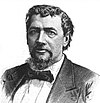 William A. Phillips |
Republican | March 4, 1875 – March 3, 1879 |
44th 45th |
Redistricted from the At-large district. |
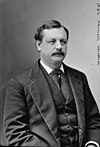 John A. Anderson |
Republican | March 4, 1879 – March 3, 1885 |
46th 47th 48th |
[data missing] Redistricted to the 5th district. |
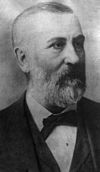 Edmund N. Morrill |
Republican | March 4, 1885 – March 3, 1891 |
49th 50th 51st |
Redistricted from the at-large district. [data missing] |
 Case Broderick |
Republican | March 4, 1891 – March 3, 1899 |
52nd 53rd 54th 55th |
[data missing] Lost renomination. |
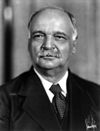 Charles Curtis |
Republican | March 4, 1899 – January 28, 1907 |
56th 57th 58th 59th |
Redistricted from the 4th district. Resigned when elected U.S. Senator. |
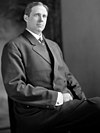 Daniel R. Anthony Jr. |
Republican | May 23, 1907 – March 3, 1929 |
60th 61st 62nd 63rd 64th 65th 66th 67th 68th 69th 70th |
[data missing] Retired. |
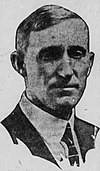 William Lambertson |
Republican | March 4, 1929 – January 3, 1945 |
71st 72nd 73rd 74th 75th 76th 77th 78th |
[data missing] Lost renomination. |
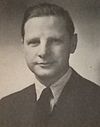 Albert M. Cole |
Republican | January 3, 1945 – January 3, 1953 |
79th 80th 81st 82nd |
[data missing] Lost re-election. |
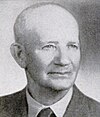 Howard S. Miller |
Democratic | January 3, 1953 – January 3, 1955 |
83rd | [data missing] Lost re-election. |
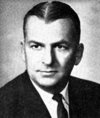 William H. Avery |
Republican | January 3, 1955 – January 3, 1963 |
84th 85th 86th 87th |
[data missing] Redistricted to the 2nd district. |
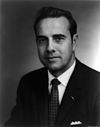 Bob Dole |
Republican | January 3, 1963 – January 3, 1969 |
88th 89th 90th |
Redistricted from the 6th district. Retired to run for U.S. Senator. |
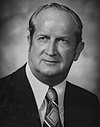 Keith Sebelius |
Republican | January 3, 1969 – January 3, 1981 |
92nd 93rd 94th 95th 96th |
[data missing] Retired. |
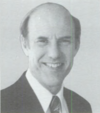 Pat Roberts |
Republican | January 3, 1981 – January 3, 1997 |
97th 98th 99th 100th 101st 102nd 103rd 104th |
[data missing] Retired to run for U.S. Senator. |
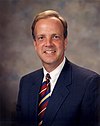 Jerry Moran |
Republican | January 3, 1997 – January 3, 2011 |
105th 106th 107th 108th 109th 110th 111th |
[data missing] Retired to run for U.S. Senator. |
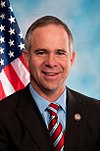 Tim Huelskamp |
Republican | January 3, 2011 – January 3, 2017 |
112th 113th 114th 115th |
[data missing] Lost renomination. |
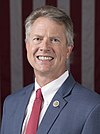 Roger Marshall |
Republican | January 3, 2017 – Present |
115th 116th 117th 118th |
Elected in 2016. |
Election results from presidential races
| Year | Office | Results |
|---|---|---|
| 2000 | President | George W. Bush 67 – Al Gore 29% |
| 2004 | George W. Bush 72 – John Kerry 26% | |
| 2008 | John McCain 69 – Barack Obama 30% | |
| 2012 | Mitt Romney 70 – Barack Obama 28% | |
| 2016 | Donald Trump 69 – Hillary Clinton 24% |
Recent election results
2002
| Party | Candidate | Votes | % | |
|---|---|---|---|---|
| Republican | Jerry Moran* | 186,850 | 91.10 | |
| Libertarian | Jack Warner | 18,250 | 8.90 | |
| Total votes | 205,100 | 100.00 | ||
| Turnout | ||||
| Republican hold | ||||
2004
| Party | Candidate | Votes | % | |
|---|---|---|---|---|
| Republican | Jerry Moran* | 239,776 | 90.72 | |
| Libertarian | Jack Warner | 24,517 | 9.28 | |
| Total votes | 264,293 | 100.00 | ||
| Turnout | ||||
| Republican hold | ||||
2006
| Party | Candidate | Votes | % | |
|---|---|---|---|---|
| Republican | Jerry Moran* | 153,298 | 78.65 | |
| Democratic | John Doll | 38,820 | 19.92 | |
| Reform | Sylvester Cain | 2,792 | 1.43 | |
| Total votes | 194,910 | 100.00 | ||
| Turnout | ||||
| Republican hold | ||||
2008
| Party | Candidate | Votes | % | |
|---|---|---|---|---|
| Republican | Jerry Moran* | 214,549 | 81.88 | |
| Democratic | James Bordonaro | 34,771 | 13.27 | |
| Reform | Kathleen Burton | 7,145 | 2.73 | |
| Libertarian | Jack Warner | 5,562 | 2.12 | |
| Total votes | 262,027 | 100.00 | ||
| Turnout | ||||
| Republican hold | ||||
2010
| Party | Candidate | Votes | % | |
|---|---|---|---|---|
| Republican | Tim Huelskamp | 142,281 | 73.76 | |
| Democratic | Alan Jilka | 44,068 | 22.85 | |
| Libertarian | Jack Warner | 6,537 | 3.39 | |
| Total votes | 192,886 | 100.00 | ||
| Turnout | ||||
| Republican hold | ||||
2012
| Party | Candidate | Votes | % | |
|---|---|---|---|---|
| Republican | Tim Huelskamp (incumbent) | 211,337 | 100 | |
| Total votes | 211,337 | 100 | ||
| Republican hold | ||||
2014
| Party | Candidate | Votes | % | |
|---|---|---|---|---|
| Republican | Tim Huelskamp (incumbent) | 138,764 | 67.97 | |
| Democratic | James Sherow | 65,397 | 32.03 | |
| Total votes | 204,161 | 100 | ||
| Republican hold | ||||
2016
| Party | Candidate | Votes | % | |
|---|---|---|---|---|
| Republican | Roger Marshall | 166,051 | 66.24% | |
| Independent | Alan LaPolice | 66,218 | 26.41% | |
| Libertarian | Kerry Burt | 18,415 | 7.35% | |
| Total votes | 250,684 | 100% | ||
| Republican hold | ||||
2018
| Party | Candidate | Votes | % | |
|---|---|---|---|---|
| Republican | Roger Marshall (incumbent) | 153,082 | 68.1 | |
| Democratic | Alan LaPolice | 71,558 | 31.9 | |
| Total votes | 224,640 | 100.0 | ||
| Republican hold | ||||
Historical district boundaries

See also
References
- ^ https://www.census.gov/fastfacts/
- ^ https://www.census.gov/mycd/?st=20&cd=01
- ^ "Partisan Voting Index – Districts of the 115th Congress" (PDF). The Cook Political Report. April 7, 2017. Retrieved April 7, 2017.
- ^ Chokshi, Niraj; Mele, Christopher (August 3, 2016). "Tim Huelskamp, Anti-Establishment House Republican, Loses Primary in Kansas". The New York Times. Retrieved August 21, 2016.
- ^ Frank W. Blackmar, ed. (1912). "Congressional Districts". Kansas: a cyclopedia of state history, embracing events, institutions, industries, counties, cities, towns, prominent persons, etc ... Vol. I. Chicago: Standard Pub Co. pp. 400–401. Archived from the original on 2006-10-10. Retrieved 2006-09-06.
- ^ http://www2.ljworld.com/news/2012/jun/08/lawrence-placed-entirely-2nd-district-under-congre/
- ^ "U.S. Census website". United States Census Bureau. Retrieved 2008-01-31.
- Martis, Kenneth C. (1989). The Historical Atlas of Political Parties in the United States Congress. New York: Macmillan Publishing Company.
{{cite book}}: Cite has empty unknown parameter:|coauthors=(help) - Martis, Kenneth C. (1982). The Historical Atlas of United States Congressional Districts. New York: Macmillan Publishing Company.
{{cite book}}: Cite has empty unknown parameter:|coauthors=(help) - Congressional Biographical Directory of the United States 1774–present
